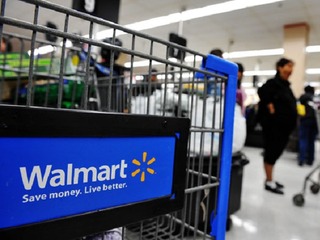Window Shopping: Disrupting retail with subscriptions
Subscription commerce and the key to making quality more affordable
Read more...
E-commerce has evolved dramatically from the nebulous ‘90s, when it was considered dangerous to use your credit card online and PayPal was losing millions—literally, millions—to fraud. I was a teenager in the late ‘90s, so I actually remember mailing checks for purchases on eBay because my mom wouldn’t let me use her credit card. Even Amazon accepted mailed checks and money orders for a while there.
Online retail fraud hasn’t disappeared. Online retailers lost an average of 1% of total revenue to fraud in 2011, up from 0.9% in 2010, and the majority of online retailers agree that fraud has become craftier and more difficult to spot. But CyberSource, which publishes an annual report on payment fraud, notes that online payment fraud has increased in large part because the industry as a whole has grown.
A growing industry
There are now some 500,000 e-commerce sites in the U.S., with hundreds of thousands more in Europe and China. Last year, $161.5 billion was spent in online purchases in the U.S., which was up 14% over the year before.
As we enter the holiday season, online shopping has become a larger force than ever before. This season is already being marked by several broken records. More people were shopping online on Thanksgiving Day than ever before, with $633 million in sales, marking a 32% increase over last year, which is the most growth in online sales in a single day so far. Black Friday—the day of brick-and-mortar doorbusters—broke records with $1 billion in online sales, and Cyber Monday hit $1.46 billion in sales, making it the largest single day of online sales in history.
So far this season, retail e-commerce spending has reached $26.6 billion, marking a 13% increase over last year, with several days last week exceeding the $1 billion mark. To put that into perspective, Cyber Monday 2010 was the first time in history that online sales topped $1 billion in a single day.
Despite the persistence of fraud, online shopping has reached a level of cultural ubiquity that makes it a non-issue. By the end of 2017, analysts expect e-commerce spending to exceed $330 billion. But e-commerce is something of a paradox since, despite its massive growth, it still only accounts for 8.6% of retail dollars spent in the U.S.
So what is e-commerce today?
“It’s become the Web in itself,” said Venky Harinarayan in an interview.
Harinarayan has been in the news recently as the co-founder of Kosmix, which was acquired by Walmart for a rumored $300 million to create @WalmartLabs, Walmart’s new social commerce division. It was a notable acquisition in that Walmart already has an e-commerce arm: Walmart.com. But commerce has evolved and metamorphosed so dramatically that you can’t simply include social commerce under the e-commerce umbrella.
One of @WalmartLabs’ recent launches was that of Goodies Co., a box-o’-stuff subscription shopping service for food discovery. That basic component—discovery—changes everything. You can go to Amazon or Walmart.com and search for an item, but that’s a user-driven act. That’s the site passively sitting and waiting for shoppers rather than bringing the shopping experience to the shopper through the act of discovery.
And that’s why sites like Pinterest are changing the game.
Discovery versus convenience
“It’s like a mall,” said Harinarayan. “You don’t know what you’re looking for. You have a browsing experience.”
E-commerce essentially has three main drivers: price, selection, and convenience. It's the model that made Walmart and Amazon what they are today. But no one goes to Walmart to find new ideas for kitchen decor, just like no one goes to Amazon to find the latest trends and brands. You don't serendipitously stumble upon things at Walmart or Amazon--you search for the thing you want and compare it to prices elsewhere.
"I'll shop on Amazon if I need something like batteries, but I don't look for new throw pillows on Amazon," said Index Ventures partner Mike Volpi. "Amazon started off as a convenience option. If you didn't live near a large bookstore, you could go on Amazon to find the book you were looking for. It's convenient, but convenience is a poor value proposition."
(Although, to be fair to Amazon, the company's start as an online bookstore was probably as much about discovery as it was about convenience.)
Challences and contradictions
The nuanced world of commerce is a big bundle of complexity and contradictions reminiscent of reading the Bible. Take mobile shopping, for example. People are spending more time on their mobile devices, which has resulted in more shopping being done from mobile devices. But is mobile actually drawing in new shoppers or are existing customers simply moving away from shopping on their PC to shop from their phone or tablet?
And what about the proportion of retail dollars spent online altogether? If e-commerce spending doubles over the next five years, it will likely still only account for less than 20% of all retail dollars spent in the U.S. And yet Amazon share prices are more than three times those of Walmart.
For the next few weeks, we’ll be diving into the world of commerce to explore some of the emerging trends and challenges facing online retail. Some of the topics we’ll be covering include:
And more. If you have a company that you think should be featured, you can contact us at newsroom@vator.tv.
Image source: chzbgr.com
Subscription commerce and the key to making quality more affordable
Read more...Pinterest does what so many others have tried to do: getting you to shop without knowing it
Read more...Warby Parker and Nasty Gal are taking over the supply chain
Read more...
Joined Vator on






